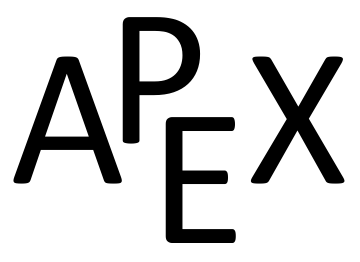Skip to main content
Contents Index Calc Dark Mode Prev Up Next \(\require{cancel}\newcommand\blank[2]{\,\colorbox{gray}{$\phantom{\rule{#1pt}{#2pt}}$}\,}
\newcommand{\highlight}[1]{{\color{blue}{#1}}}
\newcommand{\ds}{\displaystyle}
\newcommand{\fp}{f\hskip.75pt '}
\newcommand{\fpp}{f\hskip.75pt ''}
\newcommand{\lz}[2]{\frac{d#1}{d#2}}
\newcommand{\lzn}[3]{\frac{d^{#1}#2}{d#3^{#1}}}
\newcommand{\lzo}[1]{\frac{d}{d#1}}
\newcommand{\lzoo}[2]{{\frac{d}{d#1}}{\left(#2\right)}}
\newcommand{\lzon}[2]{\frac{d^{#1}}{d#2^{#1}}}
\newcommand{\lzoa}[3]{\left.{\frac{d#1}{d#2}}\right|_{#3}}
\newcommand{\plz}[2]{\frac{\partial#1}{\partial#2}}
\newcommand{\plzoa}[3]{\left.{\frac{\partial#1}{\partial#2}}\right|_{#3}}
\newcommand{\inflim}[1][n]{\lim\limits_{#1 \to \infty}}
\newcommand{\infser}[1][1]{\sum_{n=#1}^\infty}
\newcommand{\Fp}{F\hskip.75pt '}
\newcommand{\Fpp}{F\hskip.75pt ''}
\newcommand{\yp}{y\hskip.75pt '}
\newcommand{\gp}{g\hskip.75pt '}
\newcommand{\dx}{\Delta x}
\newcommand{\dy}{\Delta y}
\newcommand{\ddz}{\Delta z}
\newcommand{\thet}{\theta}
\newcommand{\norm}[1]{\left\lVert#1\right\rVert}
\newcommand{\vnorm}[1]{\left\lVert\vec #1\right\rVert}
\newcommand{\snorm}[1]{\left|\left|\,#1\,\right|\right|}
\newcommand{\la}{\left\langle}
\newcommand{\ra}{\right\rangle}
\newcommand{\dotp}[2]{\vec #1 \cdot \vec #2}
\newcommand{\proj}[2]{\text{proj}_{\,\vec #2}{\,\vec #1}}
\newcommand{\crossp}[2]{\vec #1 \times \vec #2}
\newcommand{\veci}{\vec i}
\newcommand{\vecj}{\vec j}
\newcommand{\veck}{\vec k}
\newcommand{\vecu}{\vec u}
\newcommand{\vecv}{\vec v}
\newcommand{\vecw}{\vec w}
\newcommand{\vecx}{\vec x}
\newcommand{\vecy}{\vec y}
\newcommand{\vrp}{\vec r\hskip0.75pt '}
\newcommand{\vrpp}{\vec r\hskip0.75pt ''}
\newcommand{\vsp}{\vec s\hskip0.75pt '}
\newcommand{\vrt}{\vec r(t)}
\newcommand{\vst}{\vec s(t)}
\newcommand{\vvt}{\vec v(t)}
\newcommand{\vat}{\vec a(t)}
\newcommand{\px}{\partial x}
\newcommand{\py}{\partial y}
\newcommand{\pz}{\partial z}
\newcommand{\pf}{\partial f}
\newcommand{\unittangent}{\vec{{}T}}
\newcommand{\unitnormal}{\vec{N}}
\newcommand{\unittangentprime}{\vec{{}T}\hskip0.75pt '}
\newcommand{\R}{mathbb{R}}
\newcommand{\mathN}{\mathbb{N}}
\newcommand{\surfaceS}{\mathcal{S}}
\newcommand{\zerooverzero}{\displaystyle \raisebox{8pt}{\text{``\ }}\frac{0}{0}\raisebox{8pt}{\textit{ ''}}}
\newcommand{\abs}[1]{\left\lvert #1\right\rvert}
\newcommand{\sech}{\operatorname{sech}}
\newcommand{\csch}{\operatorname{csch}}
\newcommand{\curl}{\operatorname{curl}}
\newcommand{\divv}{\operatorname{div}}
\newcommand{\Hess}{\operatorname{Hess}}
\newcommand{\lt}{<}
\newcommand{\gt}{>}
\newcommand{\amp}{&}
\definecolor{fillinmathshade}{gray}{0.9}
\newcommand{\fillinmath}[1]{\mathchoice{\colorbox{fillinmathshade}{$\displaystyle \phantom{\,#1\,}$}}{\colorbox{fillinmathshade}{$\textstyle \phantom{\,#1\,}$}}{\colorbox{fillinmathshade}{$\scriptstyle \phantom{\,#1\,}$}}{\colorbox{fillinmathshade}{$\scriptscriptstyle\phantom{\,#1\,}$}}}
\)
Chapter 3 The Graphical Behavior of Functions
Our study of limits led to continuous functions, a certain class of functions that behave in a particularly nice way. Limits then gave us an even nicer class of functions, functions that are differentiable.
This chapter explores many of the ways we can take advantage of the information that continuous and differentiable functions provide.

